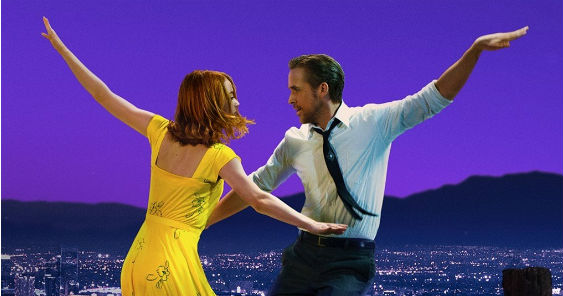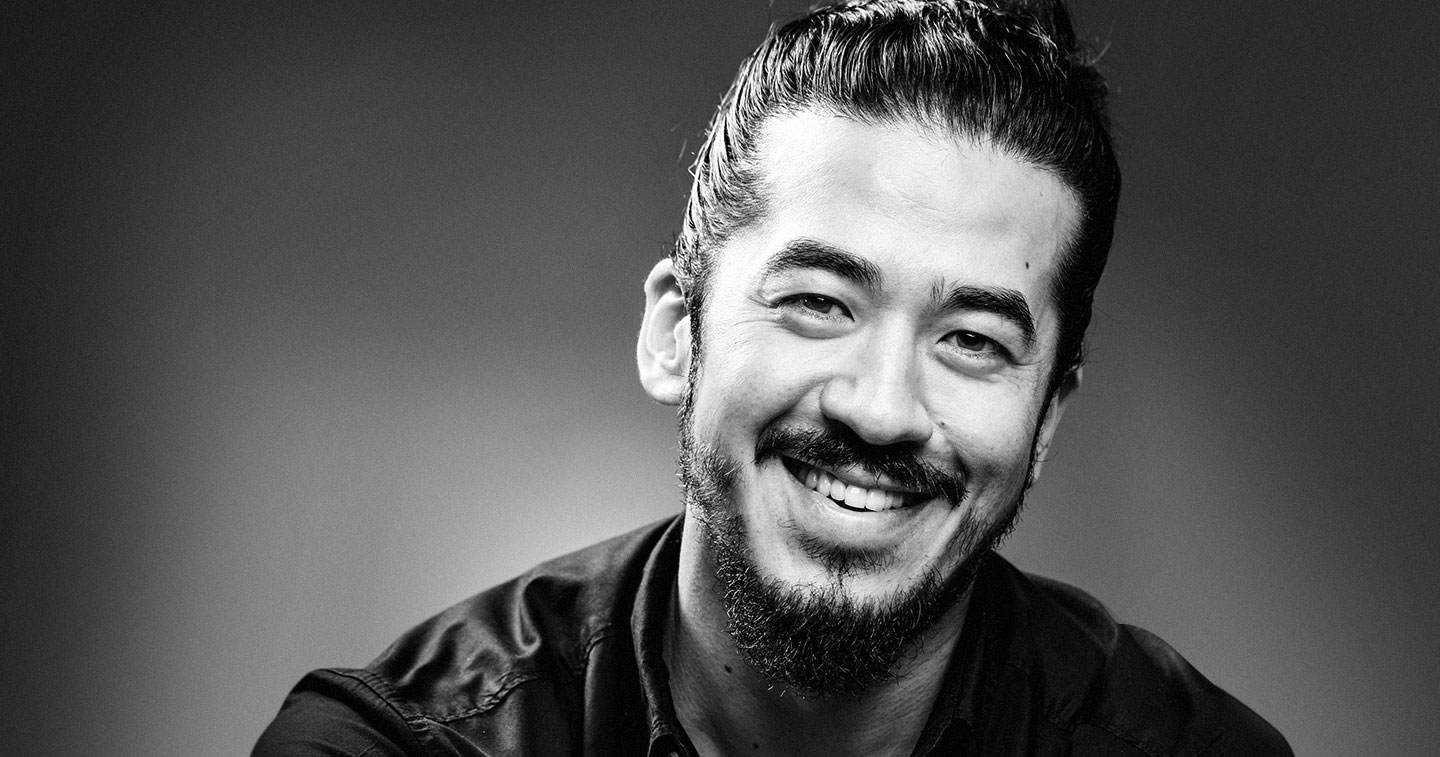Andrew Paredes reviews La La Land, a musical that harkens back to the golden era of Hollywood and directed by Damien Chazelle. It just won seven Golden Globes, including Best Picture, Musical or Comedy.
To me, what makes La La Land so miraculous is how easily it could have gone wrong. Think about it. A movie musical of all-original songs? About the dreams of small people, in this case an aspiring actress named Mia (Emma Stone) and a struggling jazz pianist named Sebastian (Ryan Gosling) who meet cute in modern-day Los Angeles? Shot with 1950s CinemaScope lenses in the bright primary colors of a Jacques Demy musical and choreographed to evoke Gene Kelly and Debbie Reynolds? So many things could have gone off the rails. The degree of difficulty that young director-screenwriter Damien Chazelle (fresh off winning three Oscars for his debut Whiplash) had set for himself seemed impossibly high.
But Chazelle not only surpasses the bar; he soars above it. First, by making sure that his film–unlike so many helmed by his contemporaries/fellow film geeks–is more than just an homage to Old-Time Movies. La La Land is nostalgic, sure, but never old-fashioned. The songs by Justin Hurwitz (with lyrical help from Dear Evan Hansen’s Benj Pasek and Justin Paul) work from an of-the-moment pop sensibility and are therefore instantly catchy; more importantly, they are cohesive, part of a thematic suite that forms the backbone of the narrative. Most importantly, they are employed shrewdly. The plot, while threadbare compared to the narrative tours de force that are Moonlight and Manchester by the Sea, uses the songs not just to keep the proceedings going or to amplify emotion; it keeps the echoes of the songs lingering during a stretch in the middle when there are no musical numbers to be seen or heard. So much so that by the time Emma Stone delivers the heartbreaking “Audition (The Fools Who Dream)”–by my estimation, ten times more accomplished a song than the ubiquitous earworm “City of Stars”–in her halting voice, your spirit soars and your heart cracks in two from the sheer catharsis of it.
Second, Chazelle makes sure that there is also room in La La Land for his indie sensibilities, best seen in the honesty and intimacy of those scenes where Mia and Sebastian’s desperate pursuit of their dreams start to take a toll on their relationship. This makes La La Land the first modern-day musical that is also undeniably an independent film.
And third, he cast two leads at their peak movie-star wattage. Stone and Gosling are the modern embodiments of movie stars at their best, in that they make all their hard work seem effortless; despite the piano lessons and choreography and nerve-wracking live singing, there is nary a sweat stain to be seen. For this, they will probably not be rewarded with Oscars.
All that registers from Chazelle, Stone and Gosling’s work in La La Land is unadulterated joy, a delirious yet grounded love letter to a city that encourages dreams even as it crushes them. And all that will be left with you as you leave the theater is an almost physical swoon, a lingering sense of wonder at how all these disparate elements came together to produce magic. And really, during these times when the world feels like it’s closer to the edge of the precipice than ever before–who can’t use a little magic?
Andrew Paredes makes a living thinking of shows to produce but wishes he could live in a Hollywood musical full-time.







